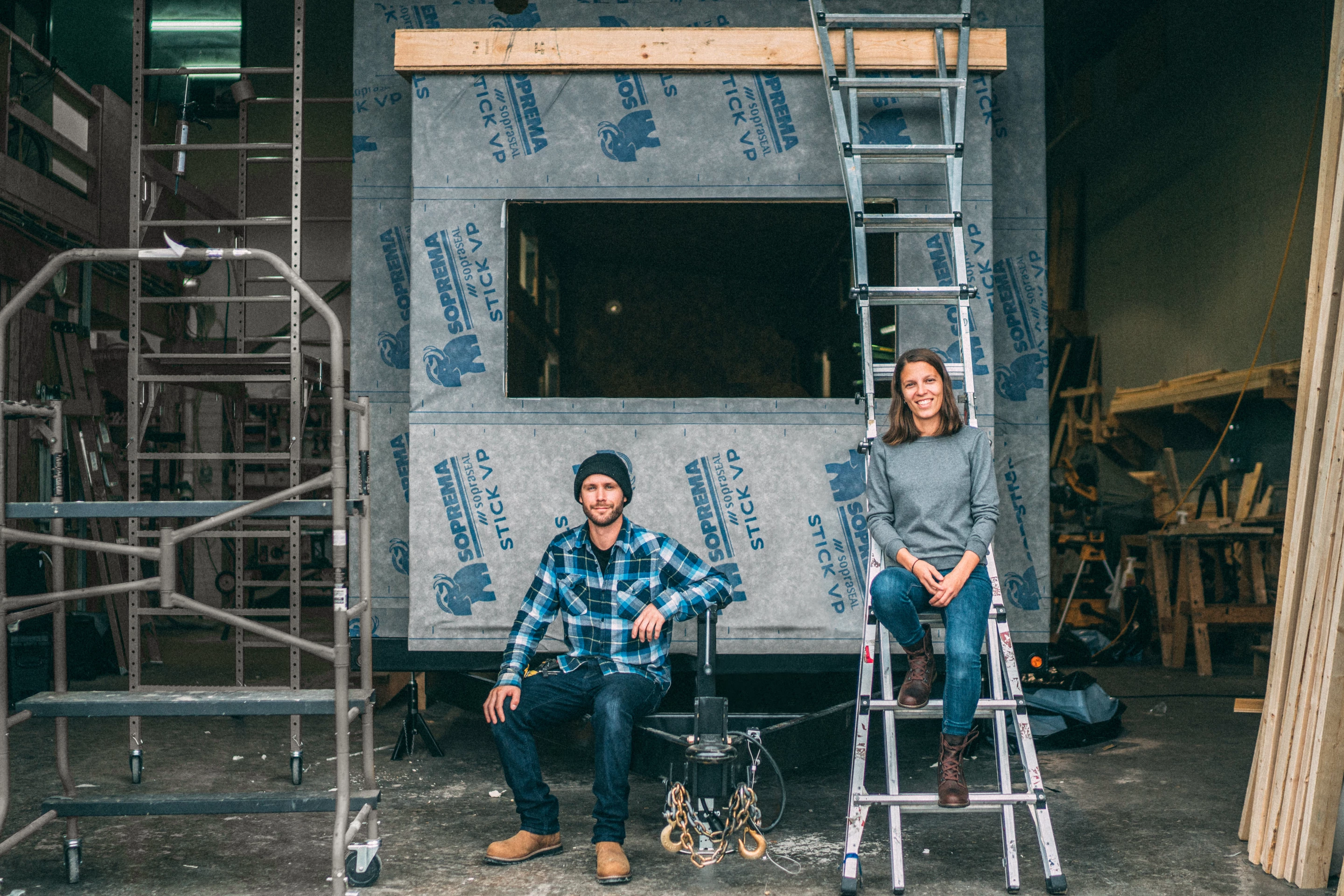Last year, we reported on the Noyer, which, like all Minimaliste's tiny houses, is built to handle extremes in heat and cold. The Canadian firm has now unveiled an updated take on the model with the Noyer V4. Its owner is an engineer who's used to living on boats and the interior design reflects his input, with a focus on shoehorning in as much storage as possible. The home also offers increased living space and provides a well-stocked kitchen with plenty of appliances.
The Noyer V4 is based on a triple-axle trailer and is finished in cedar, with steel accenting. It measures 32.5 ft (10 m) long, so is a little longer than the original Noyer's 30 ft (9.1 m), though is not particularly large by North American tiny house standards.
The home is accessed through a screen door, with the living room situated to the right. This contains an L-shaped sofa bed and a coffee table that stows away neatly into the large entertainment center. The kitchen nearby is well-stocked for a tiny house and has a pull-out pantry, a trash compactor, an oven with an induction cooktop, and a microwave. Elsewhere lies a large fridge/freezer and a dishwasher. The dining area is nearby and includes a table for two with integrated storage space, and there's also generous storage space situated under the living room's raised floor in the form of drawers that pull out to 7 ft (2.1 m).

The Noyer V4's bathroom has a washing machine and dryer, plus some additional storage. There's a shower and a vanity sink, and the most gadget-packed (flushing) toilet we've seen in a tiny house. It has a heated seat, built-in bidet, a lid that opens as someone approaches, and even a remote control.
There's a storage-integrated staircase adjacent to the bathroom, which leads up to the home's sole bedroom. This is a typical tiny house-style sleeping loft with a low ceiling, however, like Build Tiny's models, it does contain a lowered platform area, making it possible to stand upright and get dressed. The bedroom contains some cabinetry and a double bed.
The Noyer V4 gets power from a standard RV-style hookup and heating and cooling comes from an air-conditioning unit. It was built using SIPs (structural insulated panels) and has a high level of airtightness, which means that it requires relatively little heating or cooling to maintain a comfortable temperature.
We've no word on the price of this one.
Source: Minimaliste






















